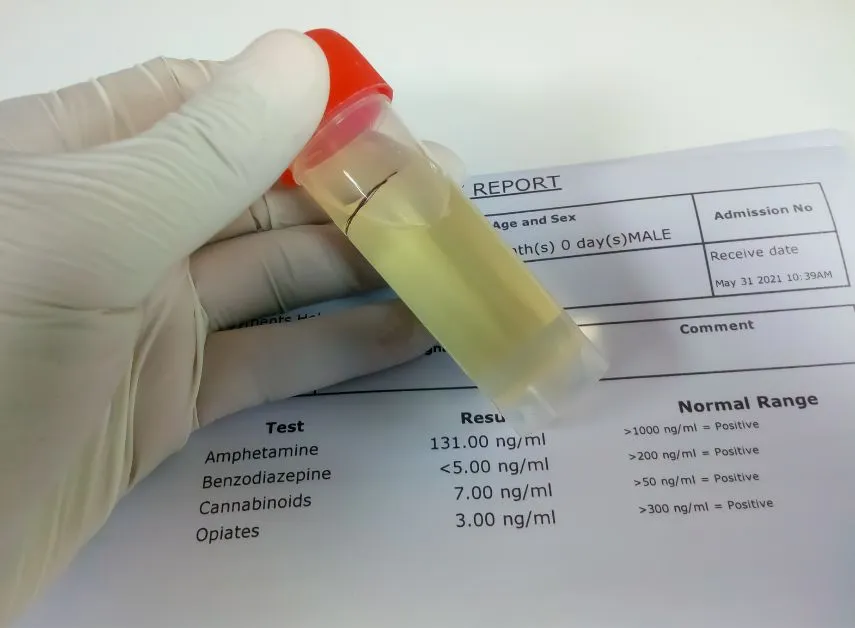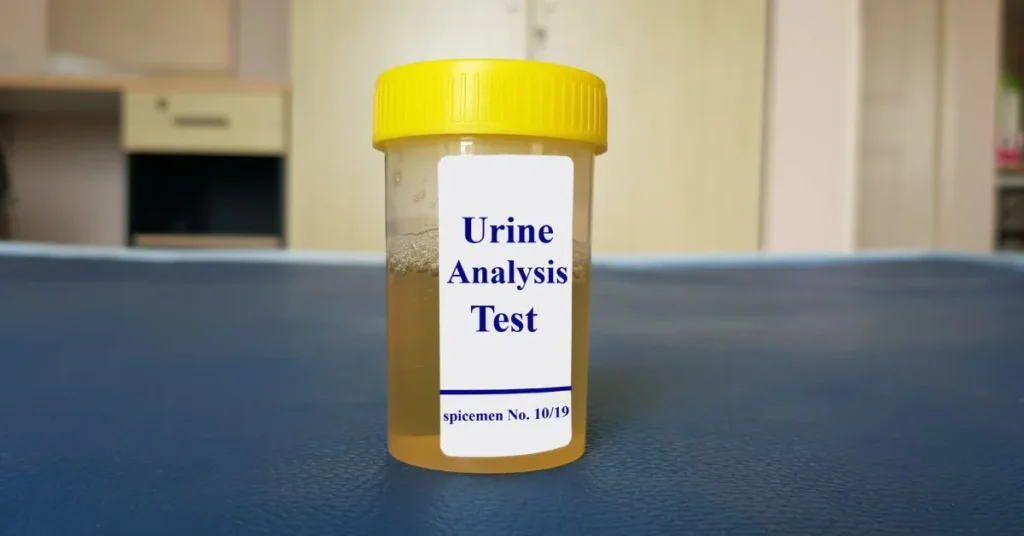Urine alcohol testing and Ethyl Glucuronide (EtG) testing are widely used methods to detect the presence of alcohol in the body. Urine alcohol testing involves analyzing urine samples to identify alcohol metabolites, while EtG testing specifically targets Ethyl Glucuronide, a direct metabolite of alcohol.
EtG testing has gained popularity because it provides a longer detection window than traditional ethanol testing. When alcohol is consumed, it undergoes metabolism in the body, resulting in the production of EtG. Unlike ethanol, which is quickly eliminated from the body, EtG can remain detectable in urine for an extended period.
The advantages of EtG testing lie in its ability to detect alcohol consumption even after the alcohol has been fully metabolized and eliminated from the body. This longer detection window makes EtG testing valuable in various contexts, such as legal cases, alcohol treatment programs, and professions where sobriety is critical.
Understanding the factors that influence the detection time of alcohol in urine using EtG testing is essential for accurate interpretation of results. Individual variations, external influences, and potential sources of false positives can affect the duration for which EtG remains detectable.
By exploring these factors, we can gain insights into the reliability and limitations of EtG testing, enabling informed decision-making and appropriate utilization of this testing method.
Types of urine alcohol tests
Test for ethanol in urine:
One type of urine alcohol test focuses on detecting the presence of ethanol, which is the beverage alcohol commonly consumed. This test aims to identify ethanol metabolites in urine samples.

However, it is essential to note that this test has limitations regarding its detection timeframe. It can only identify alcohol in urine for a short period, usually ranging from one to two hours after all the alcohol has been eliminated from the body.
Ethanol is rapidly metabolized and eliminated through various body processes such as breath, sweat, feces, and urine.
Test for Ethyl Glucuronide (EtG):
Another type of urine alcohol test specifically targets Ethyl Glucuronide (EtG). EtG is a direct metabolite of alcohol and serves as an indicator of recent alcohol consumption.
Unlike the ethanol test, EtG testing offers distinct advantages. One significant advantage is the longer detection window it provides. EtG remains present in the body and urine longer, even after all the alcohol has been metabolized. While the exact time EtG can be detected is subject to variation, it generally extends beyond the short detection timeframe of the ethanol test.
EtG testing is precious when a more extended period of alcohol detection is required. It has various applications, such as monitoring abstinence in individuals who must refrain from alcohol consumption for a specific duration.

This includes cases involving individuals under legal drinking age, military personnel in alcohol-free zones, individuals on probation for alcohol-related offenses, and professionals who must maintain sobriety for licensure or employment.
By utilizing EtG testing, a more comprehensive range of scenarios can be addressed, enabling more comprehensive monitoring of alcohol consumption and aiding in various fields such as law enforcement, treatment programs, and occupational settings.
Factors influencing the detection time of alcohol in urine using EtG
Varying claims and reported detection windows:
The detection time of alcohol in urine using EtG can vary, and there are differing claims regarding its duration. Test sellers often advertise detection windows of up to 70-80 hours.
However, independent researchers have reported shorter detection times, usually around 24 hours. It is essential to consider both perspectives when interpreting the EtG test results.
Individual factors affecting detection time:
Several individual factors can influence the detection time of alcohol in urine using EtG. Gender, age, health status, and genetic variations may impact the rate at which the body metabolizes and eliminates EtG. These factors contribute to variations in the detection time among different individuals.
Influence of external factors on detection time:
Various external factors can affect the detection time of alcohol in urine using EtG:
Foods and dishes containing alcohol: Consuming foods or dishes cooked with or containing alcohol can potentially influence the detection of EtG in urine.
Personal care products and their impact: Certain personal care products such as mouthwashes, colognes, and perfumes that contain alcohol can potentially contribute to false-positive results or affect the detection time of EtG.
Medications, herbal therapies, and cough syrups: Some medicines, herbal treatments, and cough syrups may contain alcohol, which could affect the detection of EtG in urine.
Household products with ethanol content: Exposure to household products like detergents, cleaners, paints, and solvents that contain ethanol can potentially impact EtG test results.
It is crucial to consider these external factors and their potential influence on the detection time of alcohol in urine using EtG, as they can lead to false positives or affect the accuracy of the test results. Understanding these influences helps ensure proper interpretation of EtG test outcomes.
Controversies and considerations surrounding EtG urine alcohol tests
Lack of FDA approval and regulation:
It is important to note that EtG urine alcohol tests have yet to receive approval from the U.S. Food and Drug Administration. The lack of official support raises concerns about the standardized procedures, reliability, and accuracy of these tests.
The absence of regulatory oversight adds to the ongoing debate surrounding their use in various settings.
False positive results and their implications:
One significant controversy surrounding EtG urine alcohol tests is the potential for false positive results. Most external factors, such as exposure to alcohol-containing products or consuming foods and medications containing alcohol, can lead to false positives, indicating alcohol consumption even when abstaining.
False positives can have serious consequences, impacting individuals’ personal and professional lives, including legal matters, employment, and personal relationships.
Recommendations and cautions for EtG Urine Alcohol Testing:
Importance of avoiding potential sources of false positives:
To ensure accurate results and avoid false positives in EtG urine alcohol tests, individuals undergoing such testing should be aware of and avoid potential sources of alcohol exposure.
This includes being cautious about using personal care products, medications, herbal therapies, and household items that contain alcohol. Diligent attention to these factors can help minimize the risk of false positive results.
Awareness of personal freedom and livelihood at stake:
Individuals undergoing EtG urine alcohol tests should recognize the significance of the outcomes. The test results may influence their personal freedom, careers, and livelihoods. It is essential to adhere to any required abstinence and to take precautions to prevent accidental exposure to alcohol-containing substances.

Understanding the potential impact of the test results can motivate individuals to be vigilant and take responsible actions to ensure accurate and reliable testing outcomes.
By proactively avoiding false positives and understanding the implications of the tests, individuals can navigate EtG urine alcohol testing with greater confidence and minimize the potential risks associated with inaccurate results.
Related Posts:
How Long Does Fentanyl Stay In Your System – Detailed Guide
How Long Does Benadryl Stay In Your System?
Best Fat-Burning Supplements: 4 Reasons to Add Now
Conclusion
EtG urine alcohol testing extends detection for alcohol consumption in legal, treatment, and occupational settings. The lack of FDA approval prompts the need for further research and oversight. False positives have consequences, highlighting the need for caution.
To navigate EtG testing, individuals should be mindful of false positive sources and take precautions against alcohol exposure. Vigilance with personal care products, medications, and household items minimizes misleading results.
Ongoing research is crucial to address claims, individual factors, and external influences, enhancing reliability and providing more precise guidelines.
In conclusion, EtG testing’s extended detection has limitations and requires ongoing research. Refining protocols and advancing knowledge aids alcohol monitoring, facilitating informed decision-making across various fields.
Hello there!
I’m Daniel, a dedicated blogger passionate about uncovering unique ideas and the latest trends in the industry. I have a deep interest in sharing these details with all of you.
Through this blog, I aim to provide you with valuable insights and perspectives. Instead of focusing solely on travel and outdoor activities, I delve into diverse topics that captivate your attention. From intriguing news updates to practical money-saving tips, I explore various subjects.
Additionally, I offer detailed reviews of the gear I’ve acquired on my journeys, and I guide you through the step-by-step process of planning an unforgettable trip.
Are you ready to embark on an extraordinary journey? By immersing yourself in this blog, reading it regularly, finding inspiration, and sharing my stories with your friends, you’ll enhance your next adventure, making it truly memorable, enjoyable, and unforgettable.
I appreciate your support!



